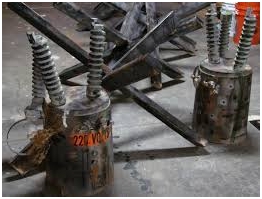
Check what he has to teach below and don’t mind if you want to discuss it!
“Designing and installing electrical transmission and distribution systems is a resource-intensive undertaking. Most companies only replace near faulty components during the maintenance or complete failure instances. This mean that most regions are served by aging systems, with the inevitable result of frequent failures, power supply disruptions, and accidents.”
“However, with the need for power supply reliability, an increased privatization of power generation and supply companies and heightened customer expectations, there is a need to implement system evaluation policies and aging models.”
Lifetimes
The primary function of the electrical components is to perform the mechanical and electrical tasks required for the supply, control, and distribution. Understanding equipment aging requires internalizing the concept of equipment life. This can be grouped into the following primary concepts.
- Physical time: this covers the time between when the equipment is in a brand new state to the retirement state. To prolong this life, engineers perform preventative maintenance.
- Technical life: the replacement of components due to technical reasons such as failure, upgrades or obsolete technology and spares.
- Economic life: a case where the equipment loses value economically, though still in working condition. The loss in value emanates from depreciation over the course of use, and excessive maintenance and operating costs.
Primary components experience aging includes
- Insulation: Usually faces the highest rate of degrading and aging. With the main purposes of insulation being heat dissipation, and separating live components, the primary cause of premature aging is heat.
- Capacitors: one of the primary uses of capacitors is to power factor correction. Dielectric hysteresis, over voltages and voltage transient, results to internal heating and degrading of the resin.
- Transformers: the liquid inside the traditional liquid filled transformers, some of which are in use in the old distribution lines, cools the coils through convection as well as offers insulation. The fluid degrades first due to moisture, thermal breakdown, impurities and dissolved gasses from arcing.
- Circuit breakers: mostly used in low voltage systems, molded case circuit breakers have a spring-loaded mechanism and copper contacts. These two and the lubrication usually age first, leading to slower clearing times. The primary causes of the degradation are pitting, friction, and contaminated lubricant.
Protecting Equipment from Premature Aging
The following are the primary ways to avoid catastrophes due to premature aging or delaying the onset:
Equipment suitability: as highlighted earlier, most of the installations were done decades ago. There have been innovations along the way in terms of equipment ratings, efficiency, construction and materials, and safety. The engineers should implement procedures to assess the suitability of the existing system components in line with the latest in the market. The resulting report should provide an insight on the required upgrades, changes, and enhancements. However, this, of course, requires an in-depth assessment of the resources required, benefits, engineering impact, safety and downtime during the changes.
Condition monitoring: Considering that the component is almost in continual use, condition monitoring is the easiest way to gauge the rate of aging. One is able to detect gradual degradation, as well as sudden failure. This allows the engineers to implement age management procedures such as replacements and repairs. Fortunately, a number of non-invasive testing tools such as infrared sensors help detect problems with minimal effect on performance and reduced downtime. Other handy tools include online conditioning where engineers can monitor far off equipment such as substations through SCADA.
Life extension techniques: Electrical distribution components, especially for large areas, tend to be costly, both in initial acquisition and in replacement. A significantly cheaper way is to formulate and implement life extension measures on the existing equipment. The working measures include adopting a solid maintenance philosophy, proper adherence to the set operational and performance maintenance schedules and
As highlighted, system aging presents a number of problems, most of them catastrophic. Scheduled maintenance, condition monitoring and suitability assessment, amongst others, should help in slowing down or preventing the effects.
Another method that engineers use is using models, where they estimate the aging using thermal loads and weather analysis, and then intercalate the results to the where the power systems are located. This helps in asset and risk management, as well as energy security.
Marvin M.
That’s all for today! Give us your opinion on this article below.

Aging and degradation are obviously two prime considerations, which help in making sure about optimum functionality of every electrical component associated with accomplishment of various mechanical and electrical tasks.